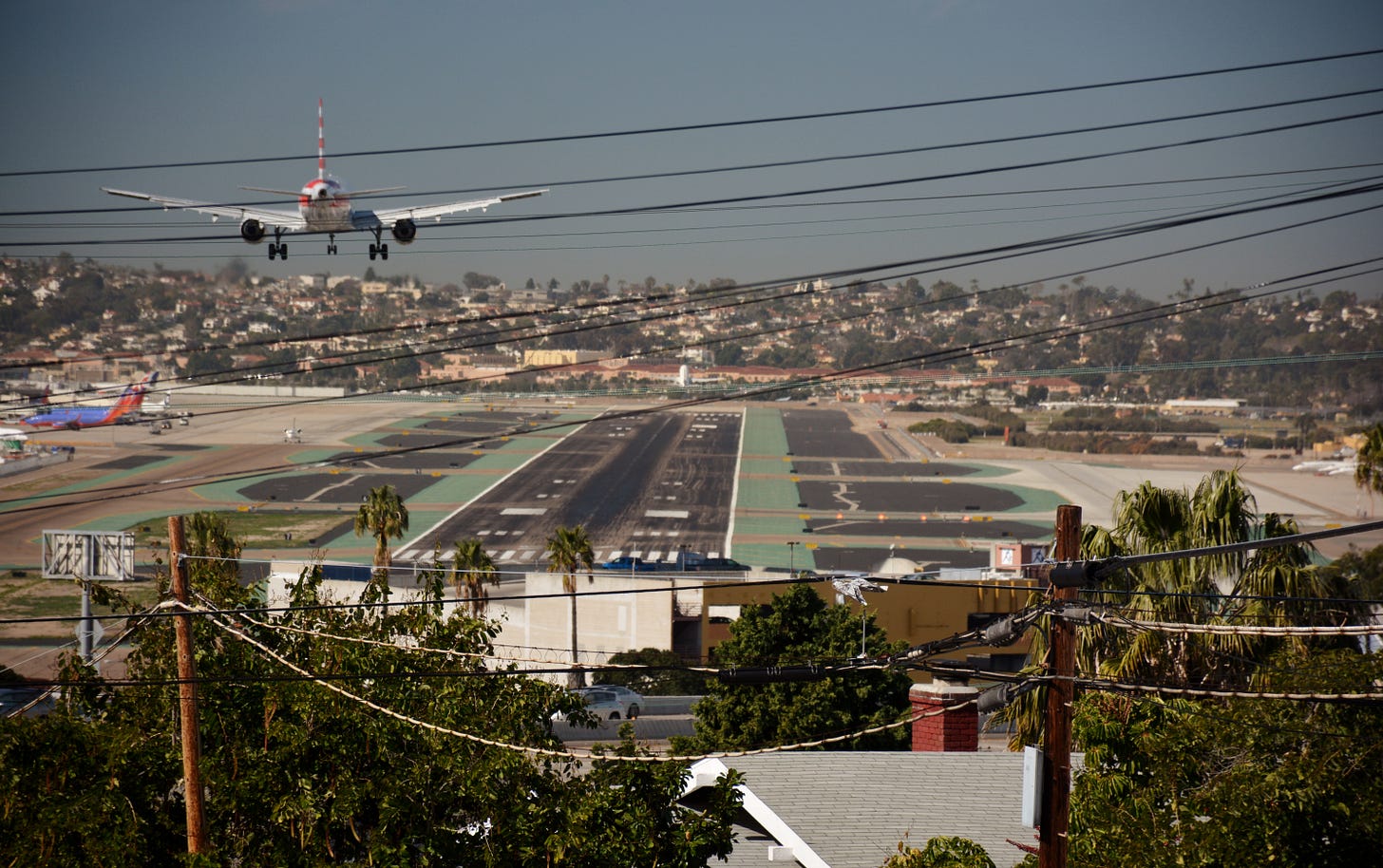British Airways’ Double Diversion: A San Diego Saga
San Diego has arguably the best weather in the United States...until it doesn't.
Watching San Diego arrivals trying to land in poor weather Wednesday night on an ADS-B flight tracker was incredibly entertaining and the perfect way for me to pass time while I laid on my couch with COVID-19.
With visibility as low as 1/4 mile and clouds at 200 feet, weather was right at minimums for landing on the eastbound runway 9. Some flights got in, some did not, and at least one carried a particularly frustrating experience for passengers and crew: the dreaded “double diversion.”
A “double diversion” is when an aircraft diverts to an alternative airport because of an issue at its intended destination, and then diverts a second time after they make another attempt to go back to the original destination. It’s painful for everyone involved.
A Beautifully Imperfect Airport
SAN is the busiest single runway airport in the United States. At 9,400 feet long, and considering that San Diego is possibly the most gorgeous city in the country, you can understand why it attracts some large international aircraft as well. Like most coastal Southern California airports, departures to the west tend to be favorable due to winds that come in off the water, and also due to the lack of obstructions when taking off toward the ocean. This is especially true in San Diego.

However, arrivals in that direction are not always easy. A climbing hill and a stubborn, too-tall parking garage built off of the eastern side of the airport make “landing minimums” from that direction quite restrictive. The published approaches for arrivals over that hill to runway 27 require that pilots have the runway in sight by the time they’ve descended to 600 or 700 feet, or else they are required to abandon the approach. That height is referred to as “minimums,” “decision height,” or “decision altitude.”
As a result, when clouds are lower than that, the only chance that flights have to land is to attempt to land in the opposite direction, wind permitting, where runway 9’s landing minimums offer the chance to land when clouds are as low as 200 feet.
Side note: Runways are named with the number associated with the direction they face on a 360-degree circle. Simply add a zero to the number and you get the direction it faces. Runway 27 faces 270 degrees, and the same piece of pavement in the opposite direction is therefore runway 9, facing 90 degrees.
As it happens, the weather was reporting the clouds at exactly 200 feet Wednesday night, leaving very little margin. The clouds being right at minimums, and slight weather fluctuations minute by minute, meant that some pilots could see the runway 9 and land, and some could not.
Those who missed the approach had the options of either looping back around to try again, sitting in a holding pattern to wait for conditions to improve, or diverting to another airport to wait it out on the ground.
British Airways Flight 273, a large Airbus A350 from London, shot one approach to runway 9 and did not make it in. They chose to immediately divert to LAX in an effort to wait it out on the ground.
Take Two
After sitting on the ground in Los Angeles for almost two hours, British 273 departed LAX to give it another try at San Diego. They approached runway 9, went missed, and chose to enter a holding pattern. There were 3 aircraft directly behind this one that were not able to land either.

Passengers shared that, while Flight 273 did 7 laps in a holding pattern, a pilot told them it was not yet legal to attempt another approach. At one point, they decided to give it another try, getting in line right behind two other aircraft. Those two got in, but Flight 273 was not as lucky…another missed approach. The crew then decided to go directly back to LAX.
The following five aircraft landed successfully, with a few going missed after that. As I mentioned, conditions can change minute by minute.
Safety Above All
Because it’s in the interest of safety, it’s generally in poor form to question a pilot who elects to go around. The operational decisions to either hold, shoot another approach, or divert, however, are subjective and situational. I could easily try to armchair this one, but that would be unfair and unprofessional considering that there are so many variables at play and I don’t have access to any of that information to appropriately opine. As an operations guy, I’d love to sit down with the crew and discuss over a beer, but I’ve yet to meet a British person who can’t drink me under the table so maybe that’s not a wise idea.
Most importantly, for as frustrating as this experience surely was for passengers (and crew alike), decisions were made in the interest of safety, and in that sense, they did so successfully. They clearly did not ignore safety protocol, and did not put lives at risk.
A vast majority of what frustrates you about flying, especially related to delays, are because of strict safety protocols that keep you safe. The safety record in the commercial airline industry in the United States over the last decade proves that.
People ultimately got on the ground and disembarked the aircraft on their own. That will always be a win in my book.
Here is an old appearance on The Weather Channel (2015), which was in reference to foggy delays at San Diego.
Disclaimer: The views expressed in this article are solely my own and do not represent the positions of my employer or any affiliated organizations. This content is for informational purposes only and is not intended as professional advice.


